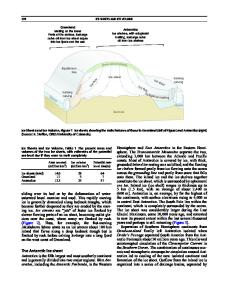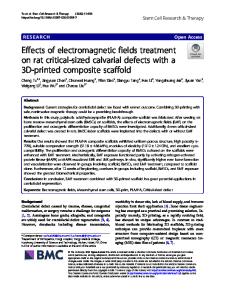Effects of Electromagnetic Pulses on the Rat Testis
AIM: The present paper investigated the effects of Electromagnetic pulses(EMP) on the male procreative system to establish personnel protection guidelines for the new type of electromagnetic radiation. MATERIALS AND RESULTS: Rats were used in this study,
- PDF / 471,777 Bytes
- 5 Pages / 595 x 791 pts Page_size
- 41 Downloads / 369 Views
Department of Radiation Medicine, Fourth Military Medical University, Xi’an, China, 2 Department of Neuroanatomy, Fourth Military Medical University, Xi’an,China
Abstract — AIM: The present paper investigated the effects of Electromagnetic pulses(EMP) on the male procreative system to establish personnel protection guidelines for the new type of electromagnetic radiation. MATERIALS AND RESULTS: Rats were used in this study, and EMP irradiation parameter: 100Kv/m field intensity, 3×106 and 4×106 pulses respectively. SD male rats were sacrificed at 6h, 12h, 24h and 48h after 4×106 pulses irradiation, and the testis were prepared for transmission electron microscopy (TEM). The contents of follicle-stimulating hormone (FSH), luteinizing hormone (LH) and testosterone (T) in the serum were examined using radioimmunoassay after different times exposed to EMP. The activity of total superoxide dismutase(T-SOD) and manganese superoxide dismutase(MnSOD) were determined according to xanthine oxygenation method ᧪ Meanwhile the density of maleic dialdehyde (MDA) was determined by thibabituric acid method. By semi-quantitative reverse transcriptionpolymerase chain reaction (RT-PCR), MnSOD and copper/zinc SOD (CuZnSOD) mRNA in the rat testis have been observed at different time after irradiation.The protein of NFțBp65 and IțBĮ in rat testis was assayed by western blotting. Under TEM, the rat testis was damaged at different time after irradiation, the damage was more serious at 24h than the other times and it wasn’t recovered until 48h after irradiation;After 3×106 or 4×106 pulses, FSH in the serum didn’t change obviously, LH and T in the serum of the radiation groups were changed fluctuatedly compared with that of parallel control respectively; the activity of T-SOD and MnSOD in rat testis decreased at 24h and the contents of MDA increased at 6h after irradiation, MnSOD mRNA expression decreased in rat testis at 24h after exposure, and CuZnSOD mRNA expression didn’t change; the protein of NFțBp65 and IțBĮ in rat testis didn’t change obviously after irradiation. CONCLUSION: The morphology was damaged and the function and metabolism of procreative system were altered on the rats after irradiation. EMP induced indiscriminate hormone secretion and excessive free radicals and over expression of some genes in the male procreative tissue played some roles directly or indirectly for the bioeffects. Keywords — electromagnetic pulse (EMP); SD rat; testis; superoxide dismutase (SOD).
I. INTRODUCTION Along with the development of electromagnetic wave technology, the denomination and intension of spatial electromagnetic radiation are increasing quickly. Nowadays, electromagnetic radiation has generally resided in our daily life and work environment. As a new environmental pollution, it is paid close attention recently. Electromagnetic pulse(EMP) is a special kind of electromagnetic irradiation which is produced as short high-voltage pulses with an extremely fast rise and a spectral bandwidth from 0 Hz to 1.5GHz.The unusual properties of EMP
Data Loading...











